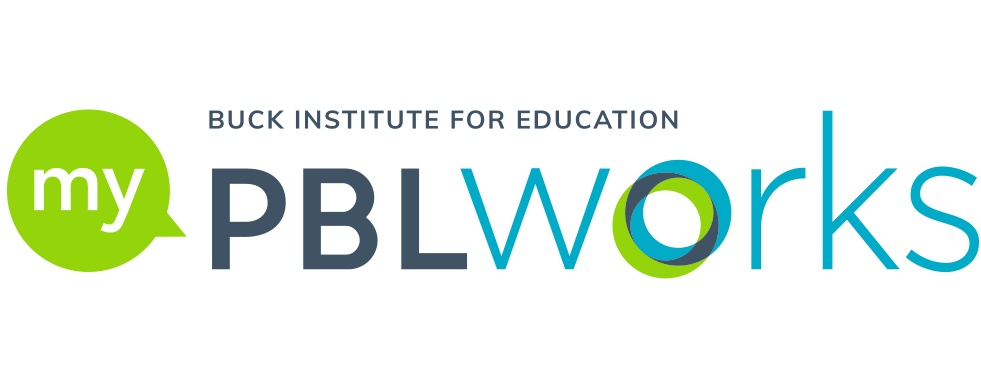Project Based Learning as a Tool for School Improvement Planning
Is the Project Based Learning process a way to improve the facilitation of school improvement? I think so. I figured that out after I was hit by a blinding flash of the obvious when I was helping leaders in a struggling school “get their arms around” the work ahead to close gaps in student achievement.
Calvin, a middle school assistant principal, and LaTonya, the principal, had analyzed their school data related to excessive tardiness. They had some ideas for solutions. Their superintendent had asked me to work with them to engage their leadership team and teachers in solving problems, rather than to telling them what to do.
After a few days of working together on methods to engage their team members and to facilitate the improvement project, I asked them to consider how they were going to help others select and plan solutions and “get the doing done.” I asked them to develop their project plan. When I made the request Calvin’s brow furrowed, and he turned to LaTonya, “This is on the schools’ improvement plan. Why do we need another plan for it?”
LaTonya replied, “We need to guide the team through what needs to be done. Maybe it will help if we write down the steps that we need to take.”
Then it hit me that they needed help breaking down their school improvement plan into project plans to facilitate team-based improvement, distribute work, monitor it and get it done. I have developed adults across all sectors for 30 years to guide performance improvement in their organizations. These educators were missing some basic project management tools that their peers in other sectors regularly use to help teams “get the doing done.”
A PBL Tool Comes in Handy
The next day I returned with a PBL project planning template from BIE that I had adapted slightly. After I explained that the template is used by teachers to plan a project, the furrows in Calvin’s brow calmed. I could tell he was more agreeable to an instructional tool than a “project plan” from the business world.
We worked through the task ahead, filling in the adapted project-planning template. Instead of a standard, we selected the goal on the school improvement plan to which the work aligned. Then we developed a driving question, using the PBL approach: “How can we guide our school team to reduce tardiness and increase instructional time?”
We defined the evidence of success. Then I asked them to consider how they would guide others to get what needs to be done identified, planned and done, just like a teacher does when guiding PBL in the classroom. What I wanted to say was, “Just like project managers do in other sectors,” but I zipped it.
“Your role, just like a PBL teacher is to figure out how to facilitate the process. You are in charge of the how that gets others to plan and do the what.
LaTonya made the connections, “Got it! This is just like what we want teachers to do to be guides for learning. We want them to engage students in learning and solving real problems, not tell them what to do.”
Calvin, with the nudge from LaTonya, began to rattle off what they needed to do, and by when. Together they listed which of them needed to do each task to form teams and guide them through the work. Using what we had been learning in our work together, they decided how and when they would kick off what they were now calling “the project”, and developed a simple communication plan.
Then we moved to the assessment part of the plan. “Think about it like a lesson,” I suggested. “What are the milestones at which you and the teams will check progress? How do you want to measure progress along the way? What evidence do you want to collect?”
School Leaders as Project Managers
The two new project managers answered my questions, jotting them down on our classroom-project-plan-turned-school improvement-project-plan. Then they did the same for how they would measure summative effectiveness: performance measures, data collection and final evidence of success.
Next, they figured out resources needed such as advocates, meeting time and people. Together they planned how reflection would be used: Individual, small group, larger group, whole school, and the parent-teacher association.
By now they were jazzed. “We can do this,” Calvin said. “I was right, we needed a plan. Now we can take the team through this, and they can develop their plans for what they are going to do, and how they are going to get it done.”
Smiling like the classroom teacher I still am at heart, I chose not to remind him he was anti-plan, the day before. The lesson had been learned, and their project plan was completed, ready for “getting the doing done.”
How are others using the PBL process to guide school improvement? Was I just slow to figure it out?
Deb Page, CPT, Deb@TIFPI.org is president of the Institute for Performance Improvement www.TIFPIedu.org, which trains and certifies school improvement facilitators.
Do you have questions, comments, or tips on using PBL principles for school improvement efforts? Please enter them below.
To view or download this resource, log in here.
Login